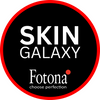Fotona 3D Stretch Mark Reduction
Abdomen is 1 treatment
Both thighs is 2 treatments
Hips each side is 2 treatments
Lower back in 1 treatment
Buttoks is 1 treatment
If doing multiple areas please call us for a seperate quote upon consultation.
Laser technology is a fascinating new arena for treatments that can remodel and resurface the skin on our bodies
The laser energy is delivered to the skin at varying degrees of depth and speed to initiate the production of new skin cells. Skin remodelling is an effective course of action for people who want to reduce superficial scars like stretch marks or acne scars. Stretchmarks are a common complaint for people who have experienced fast weight gain or pregnancy or who have skin that is prone to stretch marks. With lasers, people can now reduce and eliminate unwanted skin surface issues with laser procedures designed to remodel the skin.
FOTONA LASER
Fotona Laser is a European brand that developed a machine that can emit 2 wavelengths under the same module, which can interchange the laser treatment settings to target many different types of skin conditions. Fotona is inventive in their research and has developed a wide range of body treatments. One of their treatments includes the use of the erbium YAG laser under the Super Long Pulse (SLP) Smooth Mode. This method of laser energy delivery gently generates heat underneath the skin without any ablation. The non-ablative qualities of Fotona’s erbium laser enable patients to experience more comfortable treatments while still receiving the benefits of a comparable treatment without the ablation.
Laser stretch mark removal treatments consist of 3 steps that target different depths of stretch marks within the dermis.
Step 1: Fotona Smooth Mode
The skin of the treatment area is treated with 4 passes of the Fotona laser in Smooth Mode. This stage begins the process of controlled thermal injury to the deeper layers of the skin. Smooth Mode laser energy is non-invasive, and it stimulates collagen production by initiating skin remodelling and skin tightening.
Step 2: Fractionated Laser
The stretch marks are treated with fractionated laser beams in this step of the treatment. Fractional laser causes fractionated dermal injury as it delivers heat precisely to the stretch mark lines and adjacent skin tissue. The stretch marks treated by this step of the treatment begin to remodel and smooth out over the next few weeks from the inside out.
STEP 3: SKIN TIGHTENING
The third part of the treatment targets the larger surface of the treatment area. Thermal laser energy is delivered superficially to increase the production of collagen and elastin. This reduces laxity in the skin by inducing neocollagenesis.
What Are Treatments Like?
Treatments are generally well tolerated by patients. Numbing cream is applied to the skin prior to the treatment to help alleviate any heat or discomfort that patients may experience during any of the 3 steps involved in Toronto Fotona stretch mark removal treatments. Patients may experience sharp sensations like stinging during the second step of the treatment, and the final skin-tightening step can generate mild heat in the skin. Patients can expect their skin to feel like a sunburn for the next day or two.
How Many Treatments Are Required to See Results?
Fotona stretch mark-reduction treatments are prescribed as a scar-reduction program based on the patient’s stretch mark history, age, and other important factors that are considered when establishing a scar reduction treatment plan. Treatments are recommended every 2 to 3 weeks, with most patients requiring a series of about 6 treatments. Advanced medical-grade cosmetic products can substantially improve results with beneficial components to the healing and remodeling of the stretch marks on the skin.
Stretch marks can impact a person’s level of confidence in their body. Skin irregularities are not always something people have to live with. Great skin is attainable with the use of advanced laser technology to help restore and remodel the affected skin from the inside to the surface of the skin





